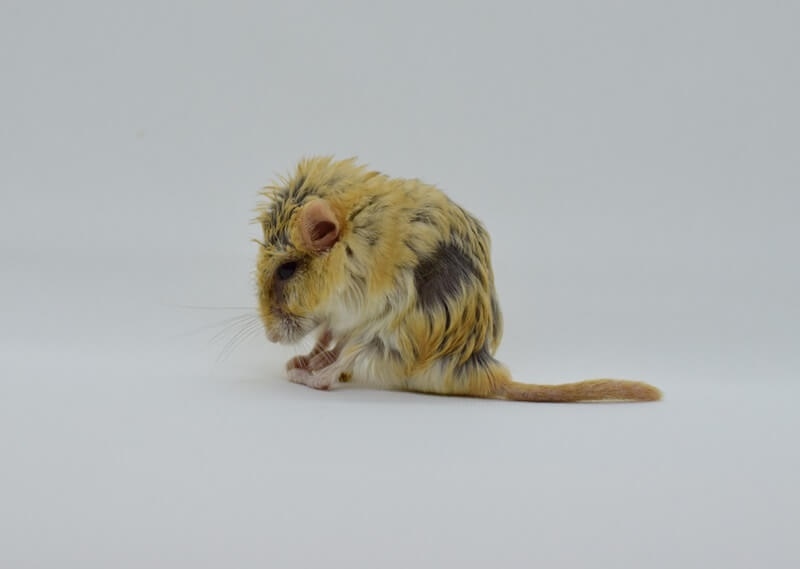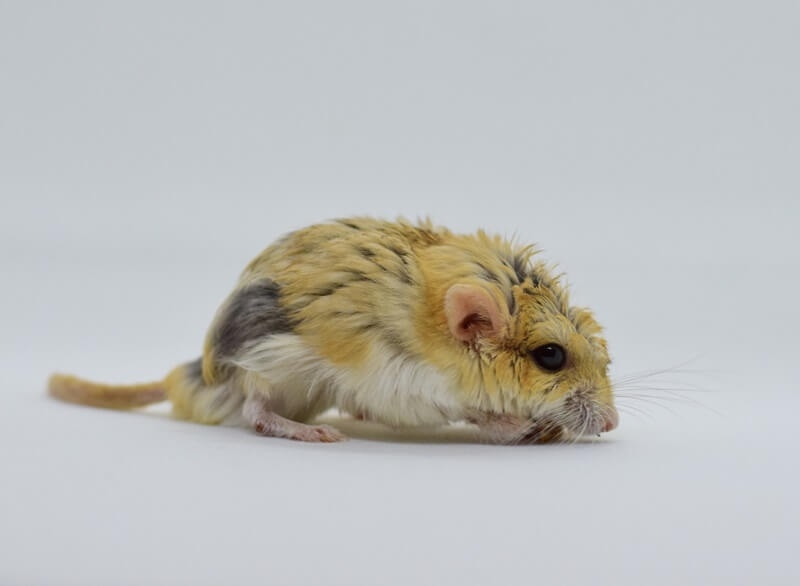
Wet tail disease of hamsters is among the most critical diseases in pet hamsters, especially young and recently weaned hamsters. This is a bacterial disease that can be life-threatening if not promptly treated. Every hamster owner needs to know hamster diarrhea symptoms and the early signs of wet tail. In this guide, we will discuss everything you should know—from causes and signs to hamster wet tail treatment and prevention methods, as well as useful hamster disease care tips to maintain your furry pet healthy.
Hamster wet tail disease, or proliferative ileitis, is a bacterial infection of the hamster intestine. It is very contagious and may get worse very quickly, killing the hamster within 48 to 72 hours if left untreated. Wet tail disease is most frequently observed in hamsters between 3 and 8 weeks of age, but adult hamsters are vulnerable as well, especially if stressed or compromised.
Wet tail is caused by infection of the intestinal lining by bacteria, typically Lawsonia intracellularis, resulting in inflammation, profuse diarrhea, and dehydration. As hamsters are small and delicate animals, the consequences of wet tail can quickly become fatal.

It is important to learn what causes wet tail disease for prevention. Multiple causes lead to the condition:
Stress is the number one reason a hamster will get wet tail. Some common stressors a hamster may experience are:
Stress weakens a hamster's immune system and makes them susceptible to diseases.
Dirty cages, dirty bedding, and dirty water favor bacteria. Keeping a clean environment decreases the chance of an infection.
Inadequate fiber, or changing a hamster's diet quickly, can disturb a hamster's sensitive digestive system. Food that is high in fat, sugar, or processed foods also increases the desire to wet tail.
Younger hamsters or recently weaned hamsters often have less mature immune systems and will get sick more often, especially when stressed. Even if a hamster is on the road to recovery, they could still or eventually become susceptible to wet tail.
Some hamster breeds, like Syrian hamsters, are more susceptible to wet tail than others.
One of the first and most common signs of wet tail is diarrhea. You should monitor your hamster's condition on a daily basis. Look for these signs of diarrhea in hamsters:
Wet fur near the tail or dampness
If you see these symptoms early, they can save your hamster's life by taking them to your veterinarian right away.
Besides diarrhea, there are a few wet tail early signs that indicate your hamster can be infected:
If any of these signs occur, don't wait—call a vet immediately. Prompt treatment reduces the chances of death by a tremendous margin.
An untreated wet tail can quickly advance:
Knowing how wet tail disease occurs allows for early detection and prompt treatment.
Treatment should commence immediately when a hamster is diagnosed or suspected of wet tail disease. Should wet tail be suspected, some of the most common treatment options are:
A veterinarian should be consulted for a proper diagnosis and to obtain prescription medication (antibiotics) for the bacterial infection that could lead to wet tail. Most antibiotics include:
The veterinarian may also give you supportive instructions for fluids and dietary changes.
Dehydration is a primary concern with wet tail. Provide:
Keep your hamster hydrated to avoid failure of the internal organs.
Wet tail hamsters tend to lose their appetite. Soft, easily absorbed foods can sustain your hamster's energy. Provide a little food often instead of one big meal.
Completely clean and disinfect the cage to eliminate dangerous bacteria. Change all bedding and make sure food and water dishes are cleaned.
If any hamster within a family of hamsters becomes sick, remove the ill hamster to prevent the possible spread of disease.
Check on the hamster every day, taking note of its appetite, energy levels, and stool consistency. Depending on the severity of illness, recovery will take days to weeks.
You indeed want to ensure it doesn't become serious enough to require treatment. Briefly, here are ways you can help decrease wet tail disease risk:
Gradually introduce new hamsters and isolate them for a minimum of 2 weeks to ensure they are healthy and free of infection.
Even aside from wet tail, proper care practices avoid many of the usual ailments. Here are some helpful hamster disease care tips:
With adequate care and attentiveness, there will be a decreased potential for wet tail disease or illnesses, and your hamster will live a long-lasting life.
Your hamster should be taken to the vet immediately if they show any of these symptoms:
Prolonged diarrhea or wet tail region
Wet tail has misconceptions that may cause some delay in seeking treatment:
Hamsters that have recovered from wet tail require special attention:
It is important to note that because the diarrhea has resolved, the hamster is not fully recovered and requires ongoing care to prevent reoccurrence.
Hamster wet tail disease is a severe gastrointestinal disease and should be treated as a medical emergency. Early recognition of hamster diarrhea and wet tail early signs, with timely hamster wet tail treatment, is critical to saving your pet's life. Preventative measures such as clean living conditions, low stress, a well-balanced diet, and regular health checks are essential in reducing infection risk. By following these more comprehensive hamster disease care tips, you can ensure that your hamster will remain healthy, happy, and free from wet tail disease.
By being proactive and vigilant, pony hamster owners can allow their hamsters to survive, have a healthy place to live, and have a happy, long-term quality of life.
This content was created by AI